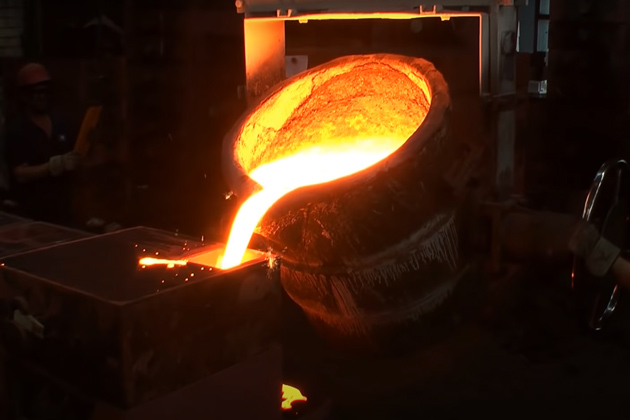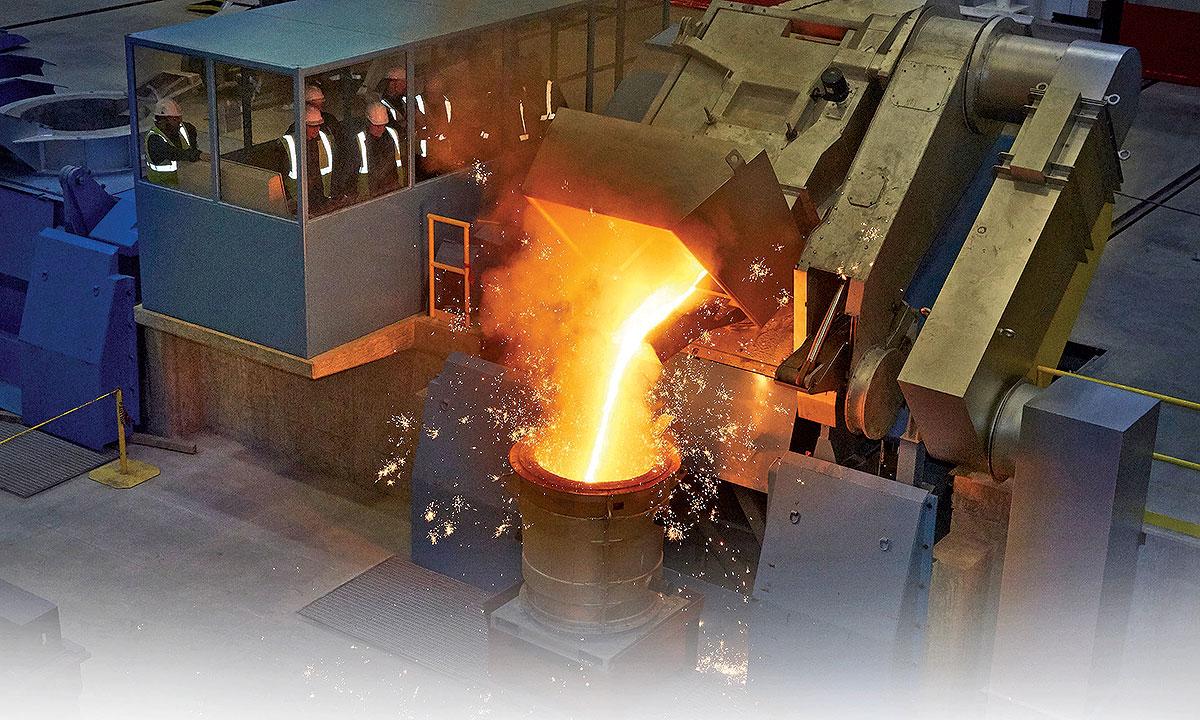A beginner’s guide to the Metal Casting process and its industrial applications
Wiki Article
Discover the Cutting-edge Strategies Used in a Metal Foundry for Superior Casting Results
In today's affordable manufacturing landscape, metal foundries are increasingly embracing innovative strategies to enhance casting outcomes - Aluminum Foundry. Advanced computer system simulations enable accurate modeling of molten metal habits, while 3D printing makes it possible for rapid production of complex mold and mildews. Additionally, environment-friendly products and automation simplify procedures. These advancements promise considerable renovations in performance and quality assurance. The influence of these modern technologies on sustainability and manufacturing techniques remains to be fully explored.Advanced Computer Simulations in Metal Casting
Advanced computer system simulations have actually transformed the metal casting procedure by improving precision and efficiency. These innovative tools allow designers to develop online versions of cast elements, allowing them to analyze and anticipate the behavior of liquified metal during the casting stage. By replicating various parameters such as temperature level, flow price, and air conditioning rates, manufacturers can recognize potential issues before physical manufacturing begins.This proactive approach reduces waste and decreases expensive mistakes, eventually causing boosted item top quality. Additionally, simulations assist in the optimization of mold and mildew designs, ensuring that they satisfy the specific needs of each task. The combination of computational liquid characteristics (CFD) and limited component analysis (FEA) more contributes to the accuracy of these simulations, providing understandings that were previously unattainable. As a result, advanced computer system simulations have actually become a crucial component of modern metal foundries, considerably progressing the market's abilities.
3D Printing for Molds and Patterns
3D printing has become a groundbreaking technique for producing mold and mildews and patterns in the metal foundry sector. This technology enables the fast production of complex geometries that standard production approaches struggle to achieve. By utilizing additive manufacturing, foundries can produce detailed styles with minimized preparations and product waste. The capacity to generate mold and mildews on demand permits greater flexibility in layout models, helping with faster prototyping and adjustments.Additionally, 3D printing can make use of a variety of products, consisting of steels and plastics, customized to particular casting needs. This versatility enhances the accuracy of molds, causing premium spreading end results with boosted surface finishes. Additionally, the decrease in the variety of parts required streamlines setting up processes, even more optimizing manufacturing efficiency. As foundries proceed to adopt 3D printing, they are positioned to redefine industry requirements, leading the way for technology and boosted efficiency in metal casting operations.
Eco-Friendly Products and Processes
As the metal foundry market faces raising stress to decrease its environmental impact, the adoption of environment-friendly materials and procedures has ended up being important. Factories are currently exploring sustainable choices to conventional products, such as utilizing recycled steels and bio-based binders. These materials not only reduce waste yet additionally reduced power consumption throughout manufacturing.Additionally, advancements in sand spreading methods have caused the use of artificial sands that are much less dangerous to the environment. Factories are additionally implementing innovative processes like molten metal therapy that reduces emissions and enhances the high quality of actors items.
Water-based coverings have changed harmful solvents, advertising a more secure job environment. By integrating these green practices, metal foundries can noticeably lower their ecological impact while maintaining top notch spreading outcomes. This change not only benefits the setting but also straightens with the expanding customer demand for sustainable production services
Automation and Robotics in Foundry Procedures
While the metal foundry sector welcomes innovation, the integration of automation and robotics is transforming operations significantly. Automated systems enhance procedures such as mold and mildew production, metal putting, and casting completing, considerably boosting performance. Robotics facilitate the handling of heavy products, lowering the threat of office injuries and making certain more secure settings.
Better, making use of automated assisted lorries (AGVs) enhances product transport within facilities, making certain timely shipment of elements to ideal workstations. By applying these innovations, foundries can adjust to varying needs with greater agility, inevitably resulting in boosted profitability and competitiveness in the marketplace. As automation and robotics continue to develop, they hold the prospective to redefine typical foundry methods and drive further improvements in casting strategies.
Real-Time Tracking and Quality Assurance Techniques
The innovations in automation and robotics have led the way for extra advanced techniques to top quality assurance in metal foundries. Real-time monitoring systems use sophisticated sensing units and information analytics to track essential parameters throughout the casting process. These systems constantly analyze variables such as product, temperature, and stress composition, making Metal Foundry it possible for instant discovery of variances from established criteria.Quality assurance strategies now integrate machine understanding formulas that assess historical information to forecast possible issues prior to they happen. This positive technique minimizes waste and enhances total manufacturing effectiveness. Furthermore, integrated feedback loopholes enable quick modifications, making certain that each casting fulfills rigid quality needs.
The execution of digital twins-- virtual reproductions of physical assets-- has actually likewise revolutionized quality control, permitting engineers to imitate and enhance procedures in real-time. Together, these cutting-edge methods significantly enhance the integrity and quality of spreadings, setting brand-new industry criteria in metal foundry procedures.
Frequently Asked Inquiries
What Sorts of Metals Are Commonly Cast in Shops?
Typically cast steels in foundries consist of aluminum, iron, bronze, and brass. Each metal shows distinct properties, making them appropriate for various applications, such as vehicle components, equipment, and imaginative sculptures, improving their flexibility in production.
For how long Does the Casting Process Normally Take?
The spreading procedure commonly takes several hours to days, depending on aspects such as the intricacy of the mold and mildew, kind of metal used, and cooling requirements. Each phase influences the total period considerably.What Precaution Remain In Area for Foundry Employees?

Exactly how Are Defects in Castings Identified and Addressed?
Defects in spreadings are determined through aesthetic assessments and non-destructive testing methods. As soon as discovered, foundry workers address them by refining procedures, changing material make-ups, and executing corrective actions to assure top quality and compliance with standards.What Is the Price Range for Metal Casting Providers?
The expense range for metal casting services normally ranges $1 to $10 per pound, depending on aspects such as material type, intricacy of the design, and production quantity, impacting overall rates considerably.In today's competitive manufacturing landscape, metal foundries are significantly adopting ingenious strategies to improve spreading outcomes. As the metal foundry sector faces raising pressure to decrease its environmental footprint, the fostering of environment-friendly products and processes has come to be necessary. Foundries are now checking out lasting alternatives to conventional products, such as using recycled steels and bio-based binders. By incorporating these eco-friendly methods, metal foundries can considerably reduce their environmental influence while maintaining top notch spreading outcomes. The innovations in automation and robotics have paved the way for much more advanced techniques to quality assurance in metal foundries.
Report this wiki page